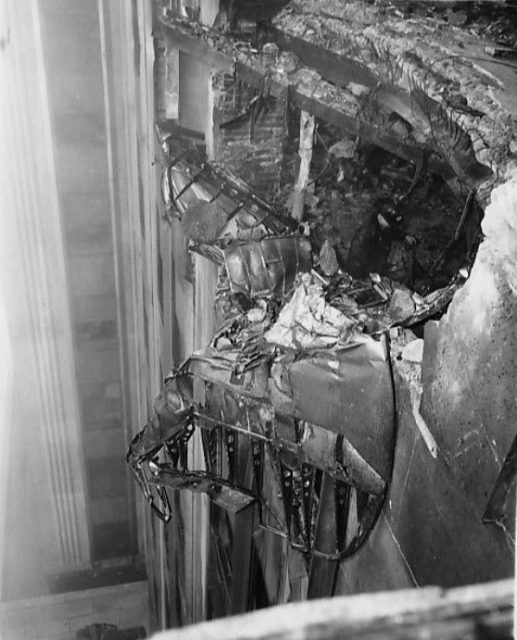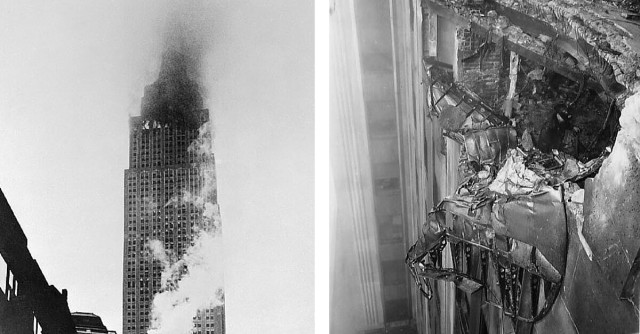William Franklin Smith, Jr., was serving as the pilot of a B-25 Mitchell bomber on the morning of July 28, 1945. It was a routine personnel transport mission which involved him flying from Bedford Army Air Field to Newark Airport. When he asked for landing clearance, he was told visibility was zero. He continued through the dense fog and become disoriented. Instead of turning left after he passed the Chrysler Building, he turned right.

The plane then crashed into the Empire State Building’s north side at 9:40 a.m. just between the 78th and 80th floors. The result was an 18-foot by 20-foot hole in the building. It hit where National Catholic Welfare Council had located its offices.
One of the plane’s engines shot through the south side of the building, which was opposite from the impact. It reportedly flew as far as a block before dropping 900 feet and landing on the roof of a building, resulting in a fire that destroyed a penthouse art studio.
The plane’s second engine, along with its landing gear, plummeted down an elevator shaft causing a fire that took 40 minutes to extinguish. It remains the only fire at such a height to be brought under control. There were 14 people killed, including the pilot.
Christopher Domitrovich and Albert Perna, a Navy aviation machinist’s friend, were all on board the plane plus 11 people who were in the building when the plane struck it. Smith’s body wasn’t recovered until two days later when search crews found that the pilot’s body had gone through an elevator shaft and then fallen to the bottom.

Betty Lou Oliver, the elevator operator, was injured. Rescuers chose to transport her on another elevator that they didn’t know had cables that were weakened. The cables broke, and she survived a fall of 75 stories, which still stands as the longest survived elevator fall in the Guinness Book of World Records.
Although there was extensive damage and loss of life, the building had many floors reopened for business the following Monday. The missing stone located in the façade serves as evidence of where the aircraft crashed into the side of the building.
